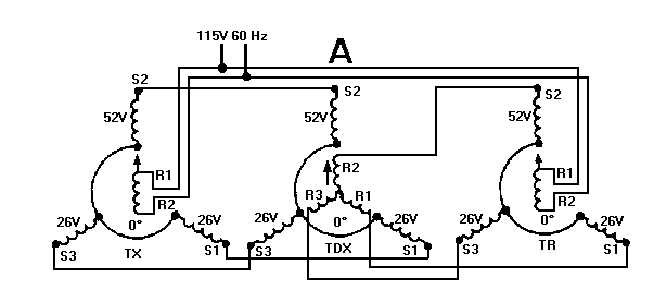1-28
Q-30. What is the purpose of using differential synchros instead of regular synchros?
Q-31. What are the two types of differential synchros?
Q-32. Other than their physical differences, what is the major difference between a TDX and a TDR?
Q-33. What determines whether a differential synchro adds or subtracts?
TX-TDX-TR System Operation (Subtraction)
Now that you know how the individual units work, we can continue our discussion with their
application in different systems. The following sections explain how the TDX and TDR are used with
other synchros to add and subtract.
To understand how a TDX subtracts one input from another, first consider the conditions in a TX-
TDX-TR system when all the rotors are on 0º, as in view A of figure 1-20. In this case, the TDX is on
electrical zero and merely passes along the voltages applied to its windings without any change.
Therefore, the TX stator voltages are felt at the TDX rotor. With the system in perfect balance, the TDX
rotor voltages equal and oppose the TR stator voltages so that no current flows in the circuit. Since there
is no current to produce the torque required to move the TR rotor, the system will remain in this
condition, thus solving the equation 0º
-
0º = 0º.
Figure 1-20A.—TX-TDX-TR system operation (subtraction).

